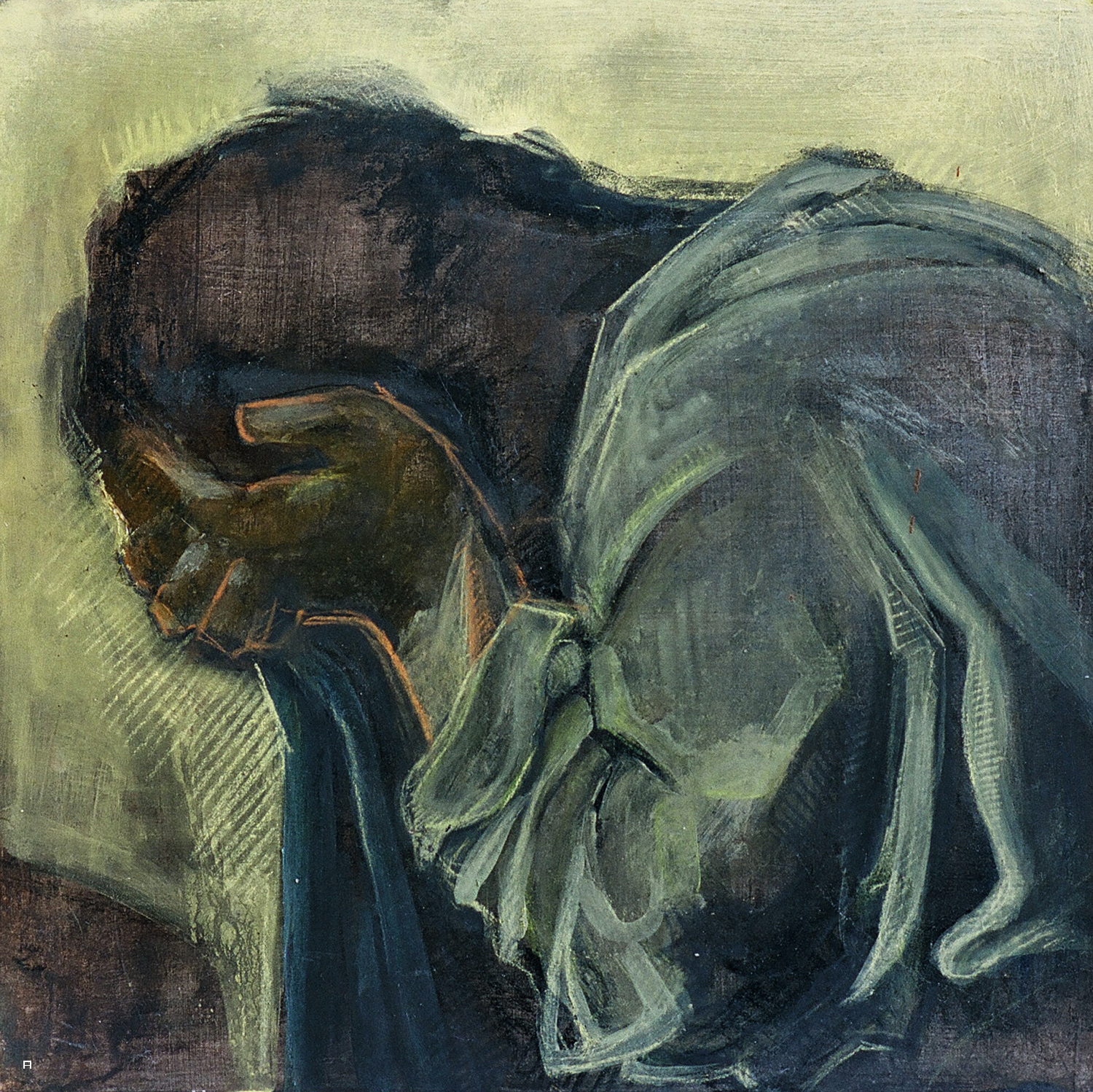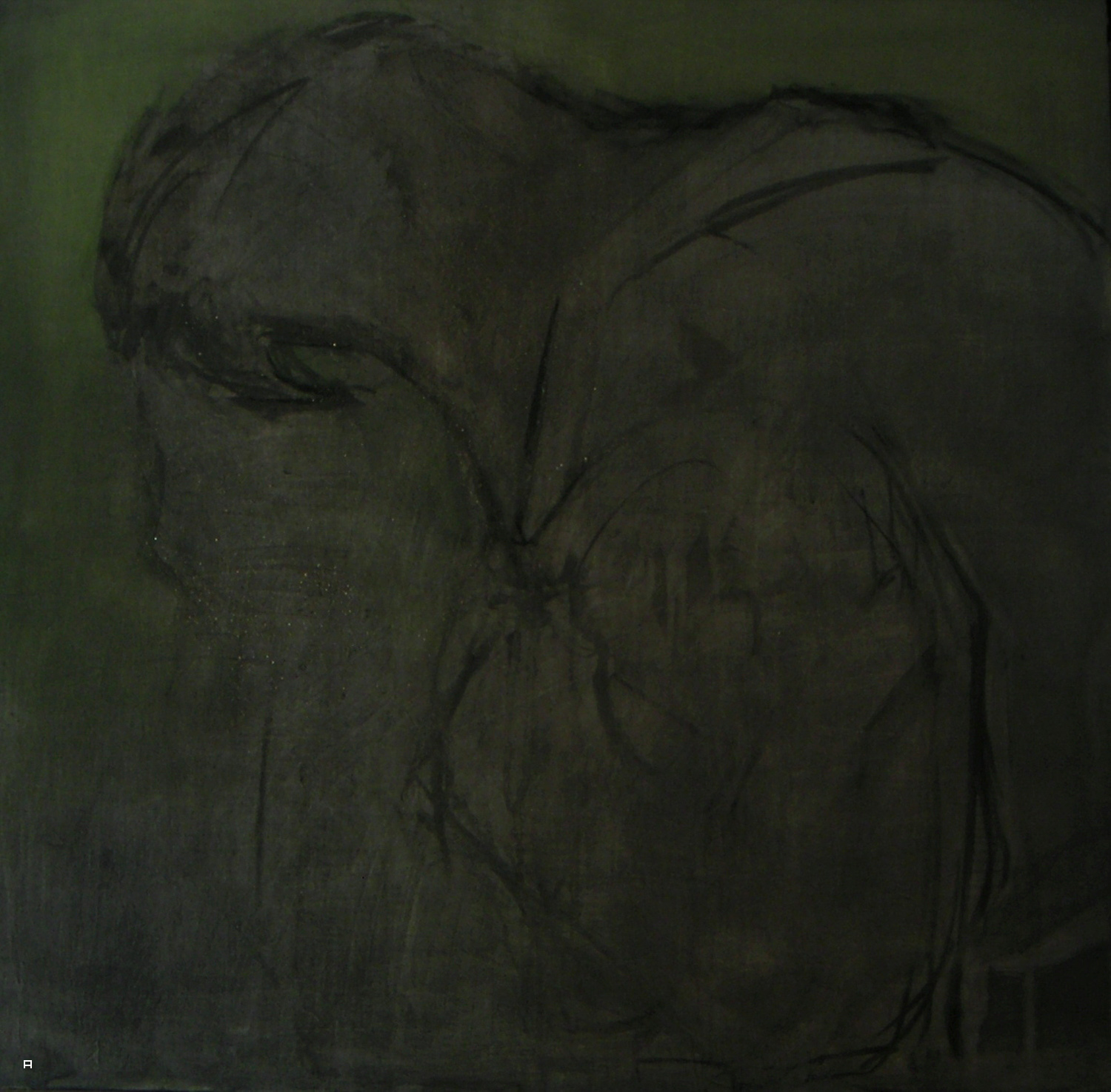The Virtue Of Timanthes
מרגרט סטרוטר
03.02.2006 - 05.01.2006
Timanthes, the greatest of Greek painters, depicted Agamemnon covering his face in his grief at the sacrifice of his daughter. Greek and Roman writers said this was an entirely correct artistic decision. Cicero cited Timanthes as a model of expression “because supreme sorrow could not be portrayed by his brush.” Such things cannot (are impossible/are ethically wrong) be shown.
Covered figures have compelled me, it seems, for decades. A few stand out: St. Gauden’s shrouded bronze figure (1884), sitting by the unmarked grave of the suicide Clover Adams in Washington DC’s Rock Creek Cemetery; or Princess Eboli, the anti-heroine of Verdi’s opera Don Carlos, whose aria in praise of veils introduces a string of tragedies. Around 2002, moved by an essay in Thomas Crow’s book, “The Intelligence of Art”-- and of course impacted by the world that was unfolding around me -- I began drawing studies of covered mourners and grievers in the work of other artists. I drew studies after Poussin, David, Sluter, Caravaggio, and even some I can no longer identify.
Recently, I took on the task of expanding my studies to monumental size in a series of paintings. By taking these relics of grief out of their context, I realize that I deprive them of their meaning. Emotion decontextualized has no more depth than the wailing ghosts in horror movies. These paintings are not then studies in grief – at least I hope not -- so much as studies in depiction and covering.






